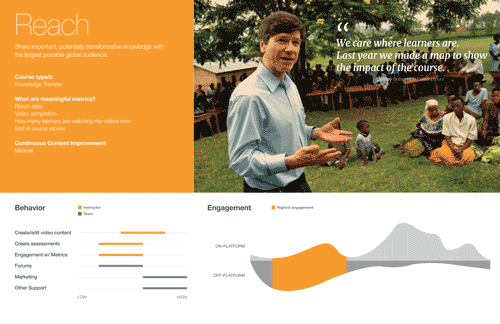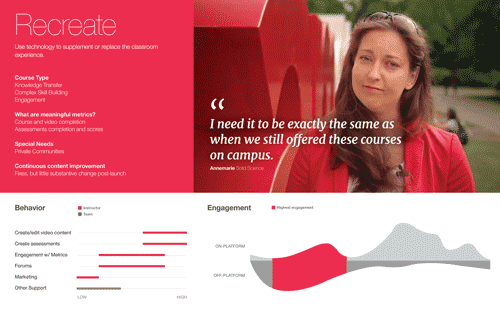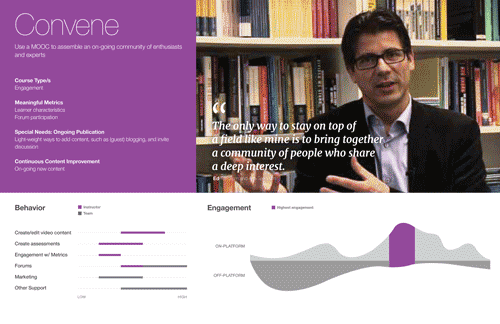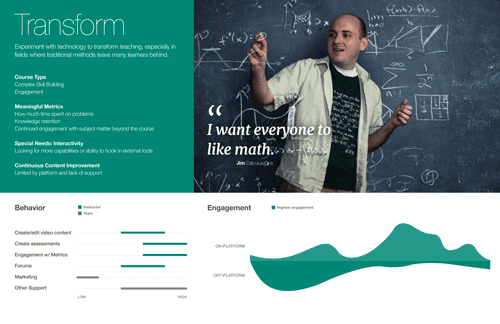Instructor Journey Map
In 2015, Coursera was making an ambitious transition into a new platform and there was a company wide effort to migrate old content to the new platform. One of the major blockers in making smooth transition was the lack of tools for users to create the content on the new platform. As we set out to build the content authoring tool, it became evident that we needed to understand our partners experience in creating a course in order to design tools that help truly met our users needs and make our platform and content competitive. This journey map was realized in collaboration with a user researcher, who led the research.
Basic Catography
The authoring journey map was built in layers, viewing a complex set of tasks through different lenses and drawing on multiple sources of data. We first explored the landscape, in a series of individual interviews with professors and instructional designers. What steps did they take from the moment they first got the idea to create a MOOC? With this information we built a very rough map describing a commonly traveled route and marking the most significant stages and milestones in the journey.
Our rough map functioned as a visual aid in a subsequent set of workshops, in which nearly 50 professors and administrators identified obstacles and stumbling blocks they found along the way. They affixed these to the relevant portions of the map. The instructors’ final gift to the design team was to pick out which parts of the journey it would make the most difference for Coursera to begin to do some roadwork on.
The final step was to collate all the data--which is a nice way of saying: decipher all the hand-written sticky notes, type them into a spreadsheet, cluster, adjust the stages and milestones of the journey, re-cluster, and count--in order to extract the most significant insights.
Outcome & Impact
The first thing we could see from the finished journey map was the unmistakable visual contrast between the magnitude of the effort that happened off-platform at the beginning of the journey and on-platform after a course was launched. The contrast between the peak of the mountain and the bottom of the belly worked as a wake-up call for Coursera that we were missing the huge opportunity to help our users at the beginning of the course creation on-platform.
The high-level insights immediately helped us identify several opportunities to ease the authoring journey and articulate the benefits of doing so. Not only could course authors reach their destination faster (and be happier when they got there), but Coursera could have higher expectations about course quality, if we shaped the journey, provided better tools, and lent our fledgling expertise along the way.



